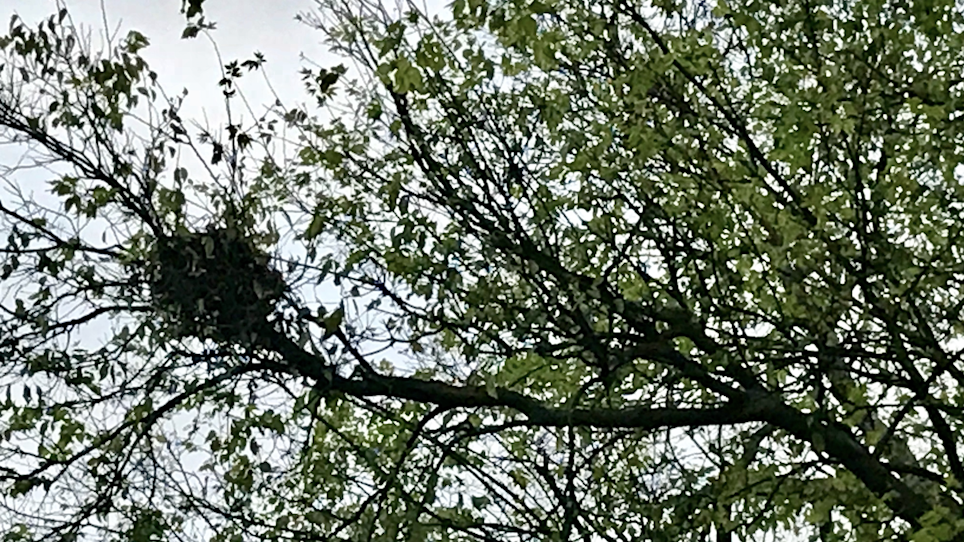Shooting into squirrel nests isn't a thing I do anymore, and never has been a big thing, to be honest, although I can't say I've never blown one apart with my shotgun.
I have smashed them to bits with my 12- and 20-gauge shotguns before, with mixed results. If you've ever done this then you know what I'm talking about. You get a shower of dead leaves flittering through the limbs and that's it. Maybe you get a squirrel, maybe two, skittering through the limbs in a frenzy as you line up for a second shot. Or, one falls to the ground if it doesn't hang on a limb.
Worst of all, though, is you shoot into a nest or beside it, close enough to tickle one end or the top but not right into it, and nothing happens. Your shot pattern doesn't blow it apart. No squirrels run away, giving you a second shot. You just stand there, wondering if nothing was in the nest or if you killed something and don't know it.
I've done that, too, and that's a bad feeling — at least it was to me. And that's why I don't shoot into a squirrel drey anymore.
Wait, What's a Drey?
Squirrel hunters call them nests, but the biological term for them is drey.
Yes, that seems weird. But that's the name of a squirrel nest, officially, if you're looking up anything related to the biologist-scientific world.
From the ground, a squirrel nest looks like a big wad of leaves crammed into a bunch of limbs atop a tree or amid a cluster of vines. That's what it is, but there's more to it than that. It's not like you raked your yard and then just shoved eight or 10 handfuls of leaves into the fork a tree. Bushytails are far more industrious and smart about their digs for the winter.
Sometimes squirrels will find an abandoned woodpecker nest in a tree trunk and become house flippers. The woodpecker probably lines its nest with soft feathers or other materials for its young, but squirrels need something heartier for winter weather. So they'll be actively seeking leaves, twigs and fur or other warm materials to line the inside of their den. Having it in a tree trunk even makes it better to block the wind and snow or rain.
We typically see squirrel nests as the leafy clumps up in trees, usually 20 feet high or higher. Rarely have I seen one lower than 20 feet but I have, once or twice. They were in smaller trees I could easily shake to see if anyone was at home. Being higher in the trees is another layer of protection from predators. If something tries to get them, squirrels can dash away and be two or three trees away from their nest in a flash.
The next time you see a squirrel nest, look at the location. It'll likely be in a juncture of limbs or crotch of a tree trunk, both of which offer stability. Additional smaller limbs around it, or vines, offer more strength. Squirrels will combine twigs, leaves and possibly moss or damp leaves to create a base. From there they'll weave more twigs around the limbs or vines, continuing the process until they get a thick wall with an entrance. Inside, their living area will be lined with more moss, shredded bark, grasses and leaves.
From the ground, we hunters see a glob of leaves and may wonder how it stays intact or how it could be warm. That's the amazing thing about squirrel nests, though. Some people believe squirrel nests are an indication of winter weather, which is fun folklore to consider. Maybe there's something to it?
Shooting Squirrel Nests
I don't remember the first time I shot into a nest but I'm sure it was within a year or two after I began hunting squirrels. That was more than 35 years ago when my father would drop me off for a few hours to roam the hardwood holler behind the house of a man we knew from our grocery store.
By that time I was hunting with a 20-gauge shotgun, scooching up from a .410 before moving to the 12-gauge. I guess the progression in gauge is normal, although I skipped the 16-gauge and now enjoy the 20 again. With small game such as squirrels and rabbits, I think the 20 is fine and the 12 might be overkill. The smaller gauge is lighter to carry, too, which is a plus.
I've hunted squirrels in multiple states. It's one of my favorite things to do. There are no egos involved, none of the "you're not a real hunter" stuff we see with deer hunting. To me, a great way to spend an afternoon is with a game vest, a handful of shells, a shotgun and a pair of good boots for a nice walk.
I don't shoot into nests anymore with shotguns though. Beside it or under it? Sure, I may rattle their world a little to see if something will skitter. If I'm shooting a .22 rifle then I may pepper the edges a little, too, but I won't shoot directly through it. I've done that before, too, but no more.
Hunting ethics is something everyone has to decide on for themselves. I'll shake vines and shoot around one, but shooting squirel nests is something I don't do anymore.
How about you? What are your thoughts about this tactic?






